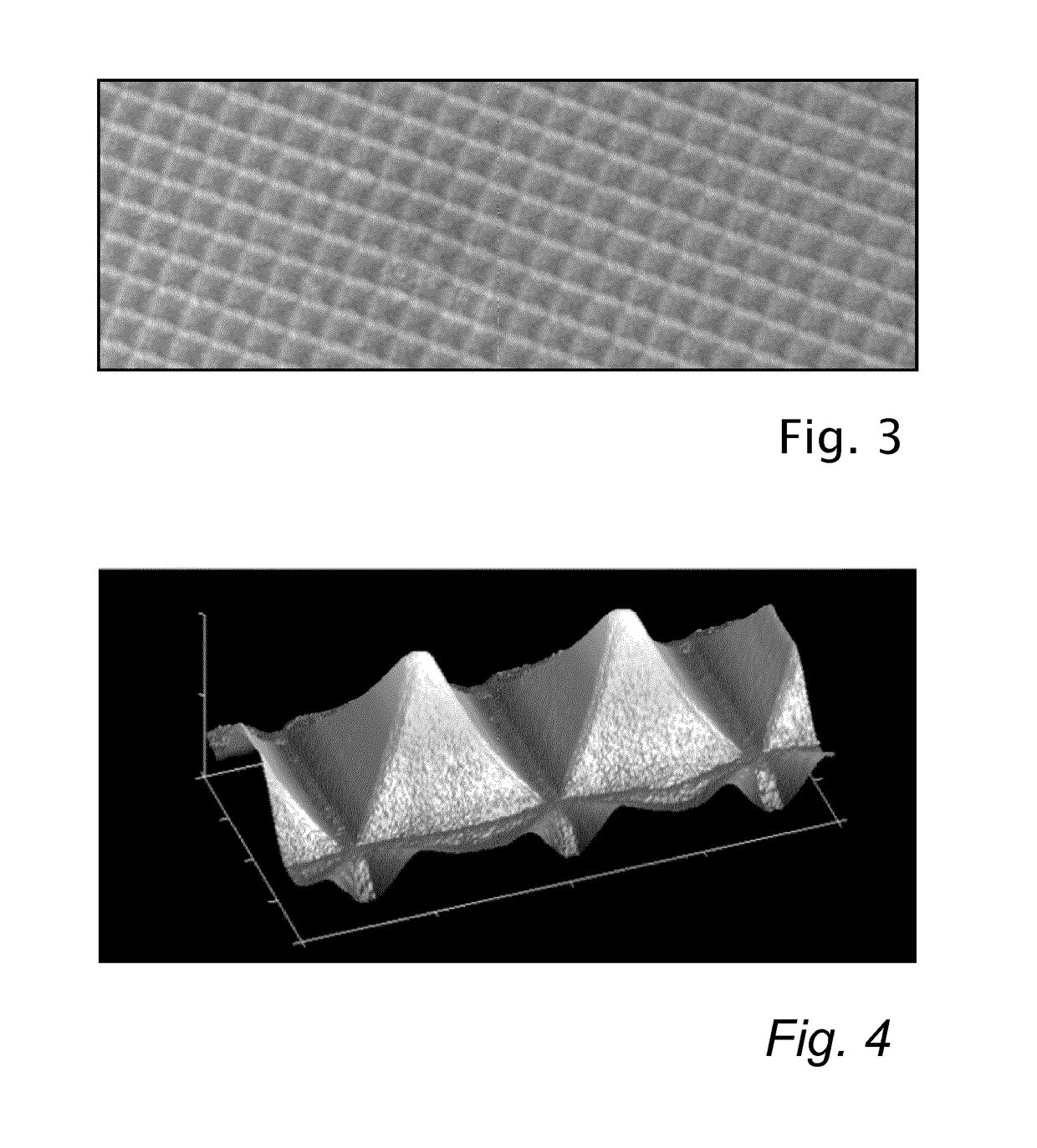Light source with diffractive outcoupling
- Summary
- Abstract
- Description
- Claims
- Application Information
AI Technical Summary
Benefits of technology
Problems solved by technology
Method used
Image
Examples
Embodiment Construction
[0026]FIG. 1 is a perspective view of a light emitting device 1 according to an embodiment of the invention, the light emitting device 1 comprises a substrate 2, such as a PCB, carrying a plurality (here three) solid state light sources 3, and a concentrating wavelength converter 4.
[0027]The solid state light source may be a Light Emitting Diode (LED), a Laser Diode or Organic Light Emitting Diode (OLED), a plurality of LEDs or Laser Diodes or OLEDs or an array of LEDs or Laser Diodes or OLEDs. The LED may in principle be an LED of any color, and is in an embodiment a blue light source producing light source light in the blue color-range which is defined as a wavelength range of between 380 nm and 495 nm.
[0028]The wavelength converter is made of a luminescent material. The wavelength converter may comprise either Ce doped Yttrium aluminum garnet (YAG, Y3Al5O12), YGdAG, YGaAG, Lutetium Aluminum-Garnet (LuAG), LuGaAG or LuYAG. YAG, YGdAG, YGaAG, LuAG, LuGaAG and LuYAG are able to have...
PUM
 Login to View More
Login to View More Abstract
Description
Claims
Application Information
 Login to View More
Login to View More - R&D
- Intellectual Property
- Life Sciences
- Materials
- Tech Scout
- Unparalleled Data Quality
- Higher Quality Content
- 60% Fewer Hallucinations
Browse by: Latest US Patents, China's latest patents, Technical Efficacy Thesaurus, Application Domain, Technology Topic, Popular Technical Reports.
© 2025 PatSnap. All rights reserved.Legal|Privacy policy|Modern Slavery Act Transparency Statement|Sitemap|About US| Contact US: help@patsnap.com



